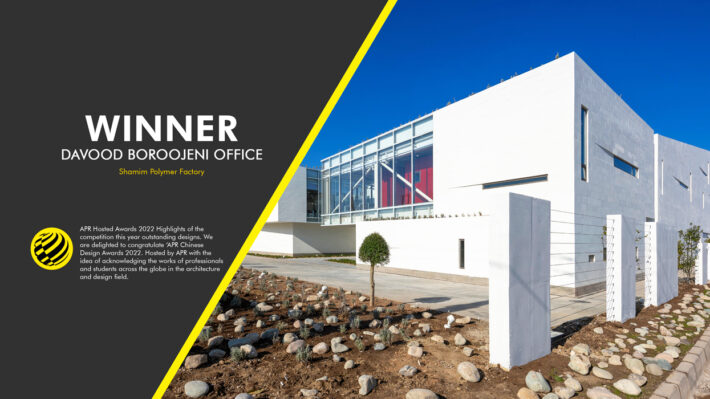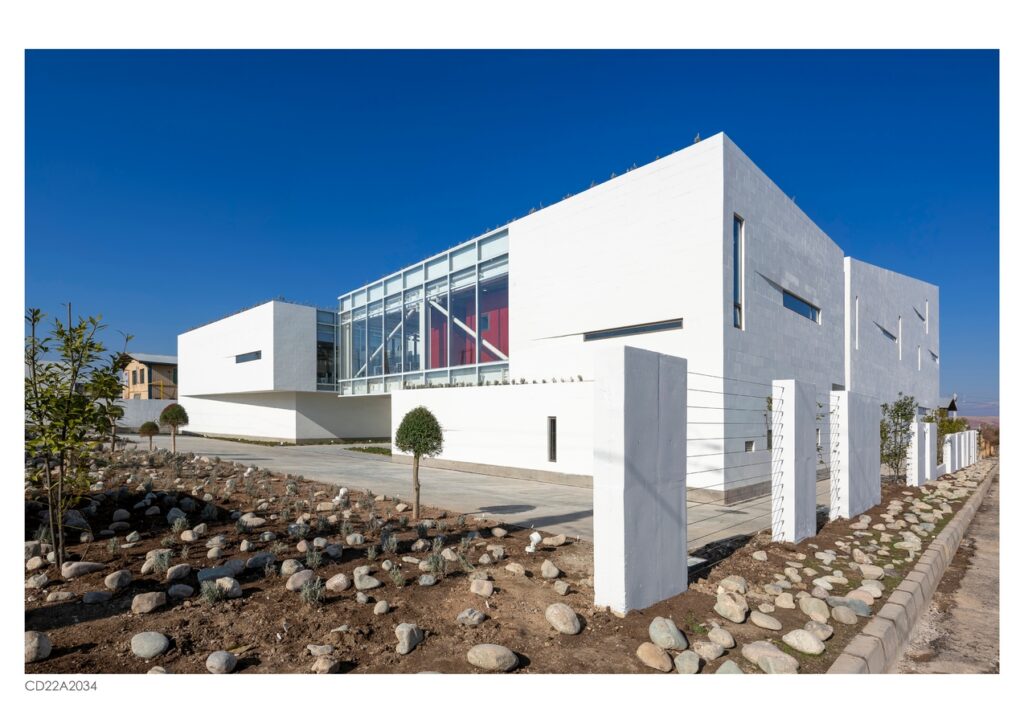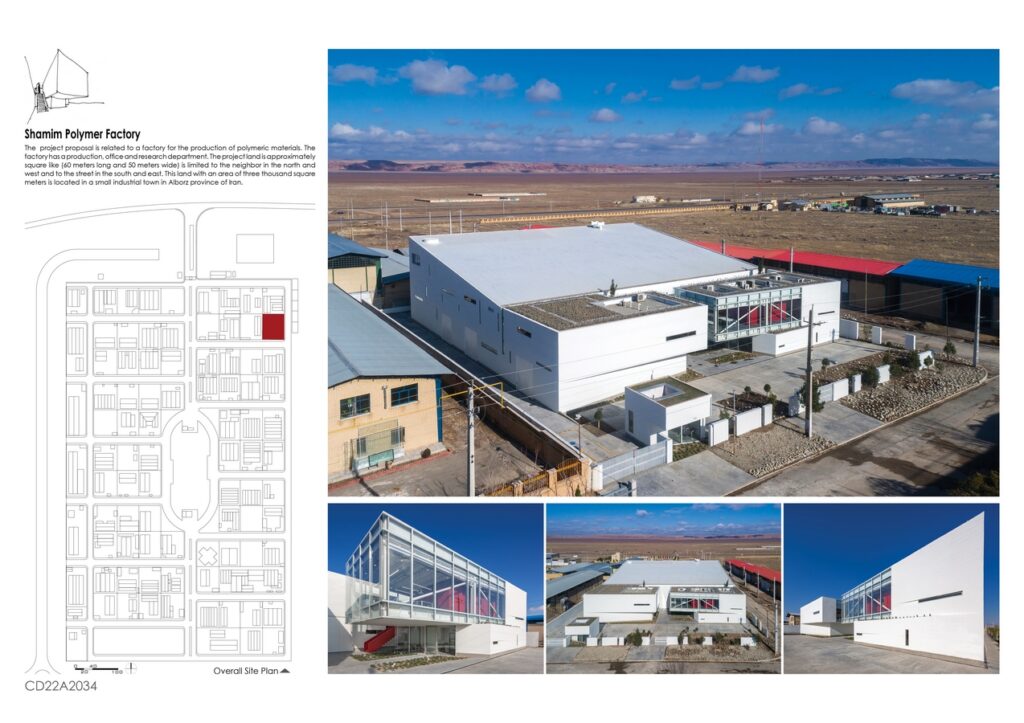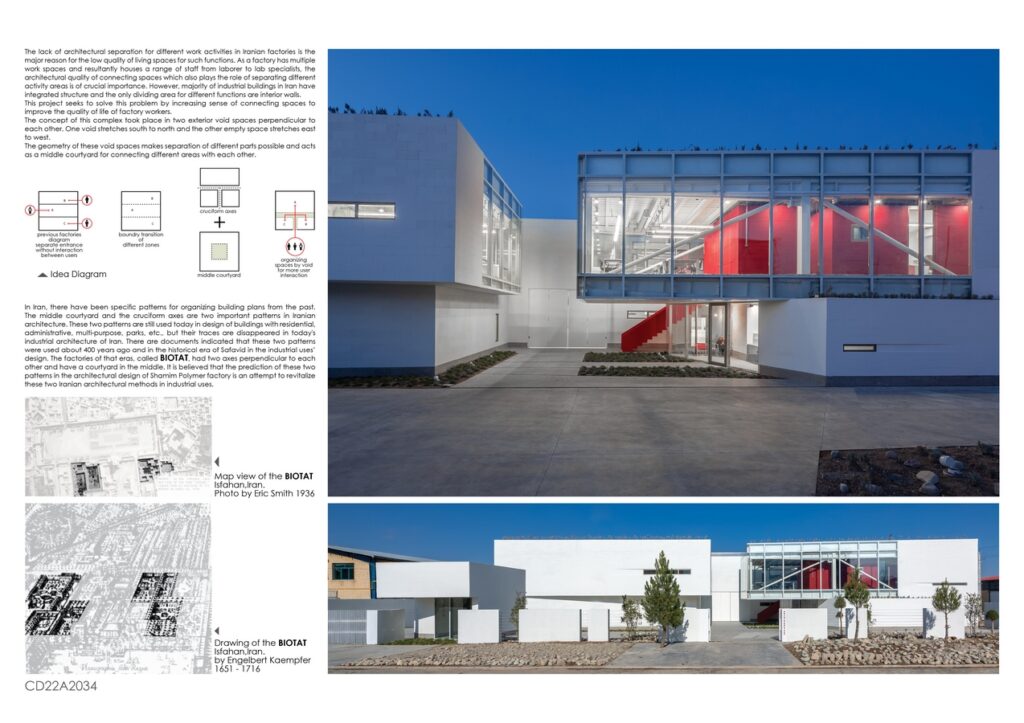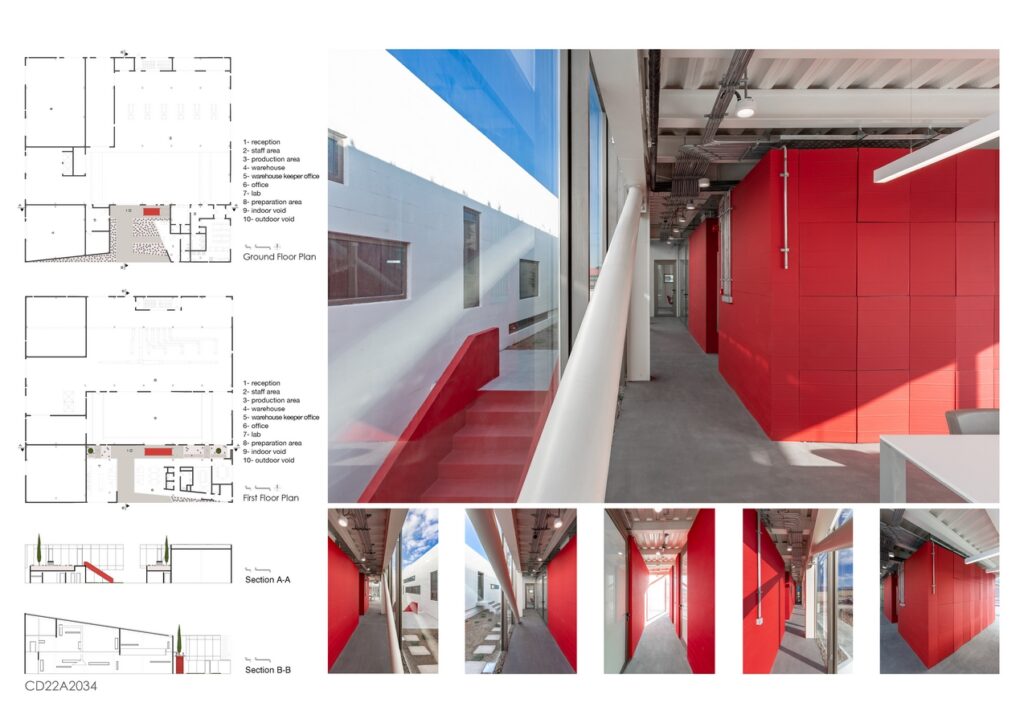The project proposal is related to a factory for the production of polymeric materials. The factory has a production, office, and research department. The project land is approximately square-like (60 meters long and 50 meters wide) is limited to the neighbor in the north and west and to the street in the south and east. This land with an area of three thousand square meters is located in a small industrial town in Alborz province of Iran.
Urban Design & Architecture Design Awards 2023: Entries Open!
Gold 🏆 Winner
Chinese Design Awards 2022
Shamim Polymer Factory
Architecture Design Built
Firm
Davood Boroojeni Office
Architect/Designer
Davood Boroojeni
Design Team
Principal Architect: Davood Boroojeni Design Team: Saba Ammari, Hamed Kalateh Invited Architect: Iman Enayati Photographer: Parham Taghioff Presentation: Saba Ammari, Saman Macvand Civil Engineer: Bardia Khafaf Mechanical Engineer: Hamidreza Nikzad, Mohsen Jafari Electrical Engineer: Amir Salamat Executive Team: Barbod Mokhtari , Emran Nazarian
Location
Karaj
Country
Iran
Photographer/Copyright
©Project Credit: Davood Boroojeni Office – Photo Credit: Parham Taghioff
The lack of architectural separation for different work activities in Iranian factories is the major reason for the low quality of living spaces for such functions. As a factory has multiple workspaces and houses a range of staff from laborer to lab specialists, the architectural quality of connecting spaces which also plays the role of separating different activity areas is of crucial importance. However, the majority of industrial buildings in Iran have integrated structures and the only dividing area for different functions are interior walls.
This project seeks to solve this problem by increasing the sense of connecting spaces to improve the quality of life of factory workers. The concept of this complex took place in two outdoor void spaces perpendicular to each other. One void stretches south to north and the other empty space stretches east to west. The geometry of these void spaces makes the separation of different parts possible and acts as a middle courtyard for connecting different areas with each other.
In Iran, there have been specific patterns for organizing building plans from the past. The middle courtyard and the perpendicular axes are two important patterns in Iranian architecture. These two patterns are still used today in the design of buildings with residential, administrative, multi-purpose, parks, etc., but their traces have disappeared in today’s industrial architecture of Iran. There are documents indicating that these two patterns were used about 400 years ago and in the historical era of Safavid in the industrial uses’ design. The factories of that era, called BIOTAT, had two axes perpendicular to each other and had a courtyard in the middle. It is believed that the prediction of these two patterns in the architectural design of Shamim Polymer factory is an attempt to revitalize these two Iranian architectural methods in industrial uses.
Human dimensions, open-air, light and shadow, green space, and color increase the sense of the middle courtyard. Different sections with glass walls or windows overlook the middle courtyard and improve its psychological security.
In choosing construction materials, their purity has been considered. Floors are made of concrete and steel, walls are made of prefabricated concrete blocks, glass, and prefabricated concrete panels, and stairs are made of cast-in-place concrete without any other materials.


